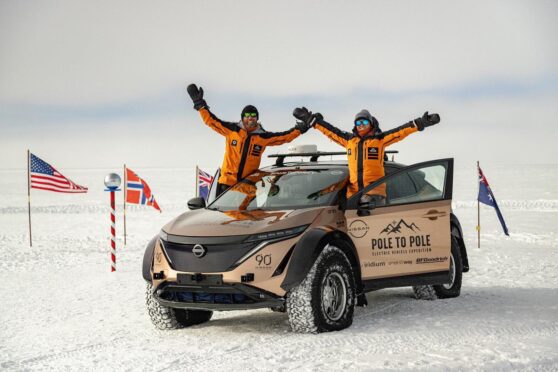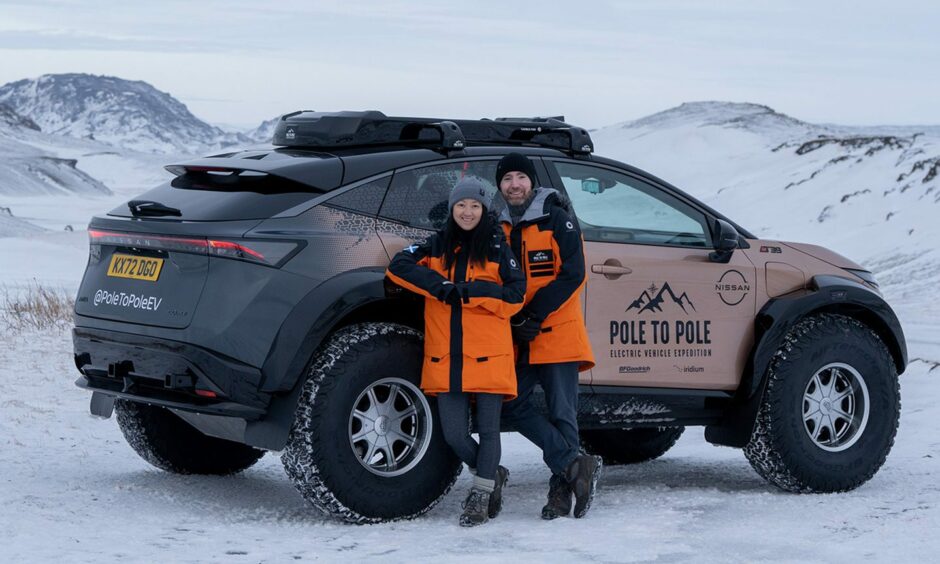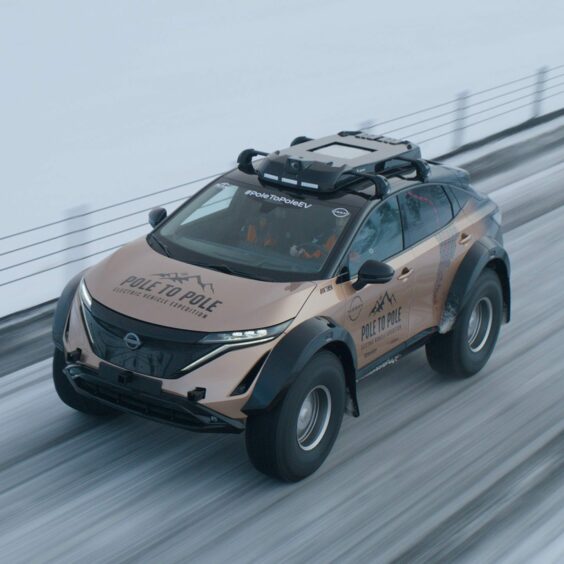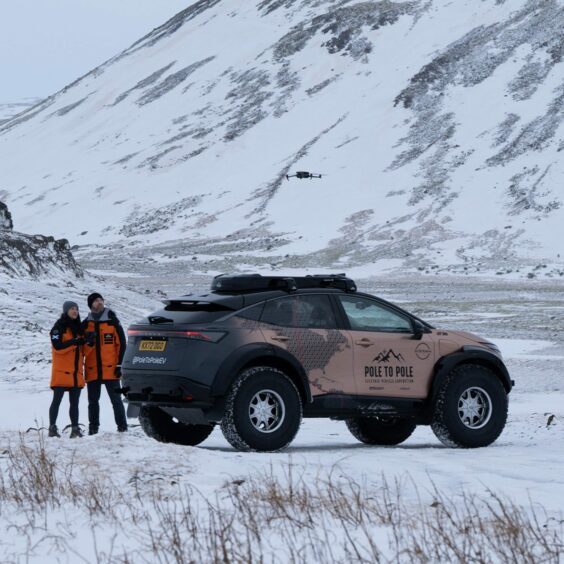An Aberdeen couple have made history by driving an electric vehicle from the North Pole to the South Pole.
Husband and wife duo Chris and Julie Ramsey, from Bridge of Don, spent nine months travelling 17,000 miles across three continents and 14 countries.
They set off from the North Pole in March this year and arrived at the South Pole at the end of last week.
What fuelled them on this Herculean journey? Well, wind and solar energy for the car of course.
However the key to keeping the Ramsey’s energy levels up was butteries, according to the BBC.
Aberdeen couple ‘have made history’
Posting on social media today, the couple confirmed that after a “tough and testing” final leg of their expedition they had reached the South Pole on Friday, December 15.
The couple’s electric car, a Nissan Ariya, was specially designed to tackle the harsh conditions.
Their vehicle was powered for much of the journey by solar and wind energy, and it’s believed to be the first time any car has completed such a trip.
The couple were able to use electric power charging points on the route, but for the polar regions where there was no electricity source, a wind turbine and solar device allowed them to harness the wind and the sun to power the car.
The summer season in the Arctic let them benefit from the sun, and in Antarctica the expedition season was December, with 24/7 daylight.
Chris explained: “After so many years of planning, it doesn’t feel real. I’ve always had full confidence in the amazing capabilities of electric vehicles.
“But it’s been far tougher than I anticipated. It’s tough out here, really tough. It makes reaching the finish line that more worthwhile.
“We are delighted to have successfully reached the South Pole.
“We have made history.”
“Trust your crazy idea”: pair reflect on journey
There were challenges along the way, they explained. Conserving the car’s battery life sometimes meant doing without heating, even while temperatures dipped towards -40 degrees Celsius.
Melting ice roads in northern Canada also meant the Ramsey’s had to abandon a trailer towing a wind turbine contraption.
There were also plenty of bright moments. In an online journal entry, the pair said seeing polar bears in their natural habitat was a highlight.
They wrote: “Six years ago the idea and dream behind this expedition with purpose was born. Many thought it was crazy. Today that dream has come true.
“Trust your crazy idea, we are testament that dreams can come true if you work hard enough and never give up on your dreams.”
It’s not the first such expedition for the Ramsey’s, who have been driving electric vehicles for over a decade.
Speaking previously with the Press & Journal, Chris Ramsey recounted how driving his Nissan LEAF the A9 used to be an epic adventure,
Back then he would regularly take it south from Aberdeen for events – and it was far from an electric dream.
“I’d have to keep the heating off and wear a big jacket, gloves, hat, and still be charging up every 60 miles,” he laughed.
“But gone are those days.”
Just three years later, Chris and Julie became the first team to complete the Mongol Rally in an electric vehicle. The pair travelled over 10,000 miles through 20 countries in 56 days, driving from the UK to Siberia behind the wheel of their Nissan LEAF.
Expedition hopes to have addressed doubts about EV’s
Aside from the thrill of adventure, the Ramsey’s hoped to inspire people and “debunk” the common myths out there still surrounding EV’s.
Chris told The P&J: “There’s so much talk out there about doom and gloom.
“But we want to show people there are solutions, from simple, everyday actions right up to major solutions like the transition of the energy grid.”
Emil Grimsson, chairman of Arctic Trucks – the company that supplied the car for the expedition – said this was “one of the most ambitious missions that we’ve worked on”.
The company previously worked on a North Pole challenge for Top Gear.
Dad draws 125-kilometre Santa Claus on streets of Aberdeen through Strava running app




Conversation